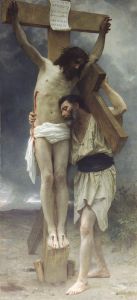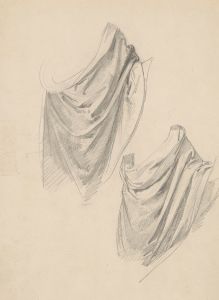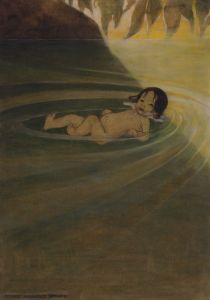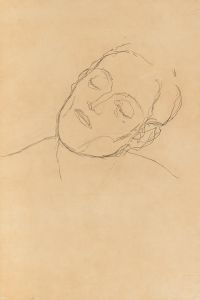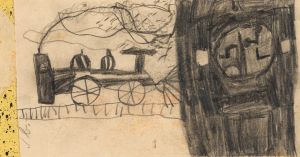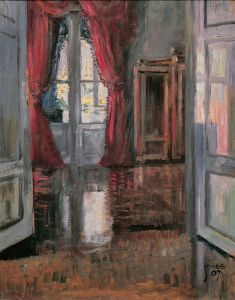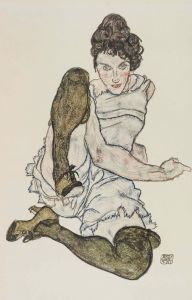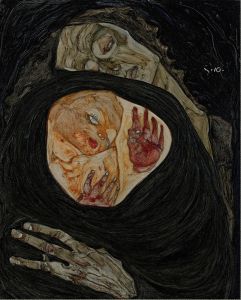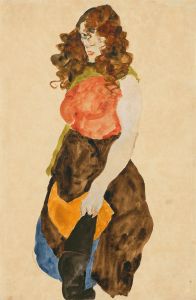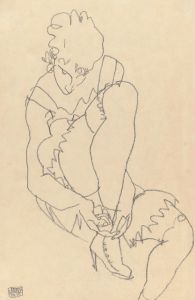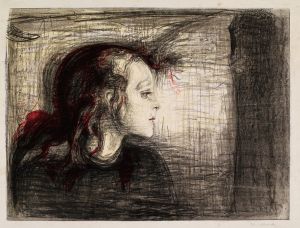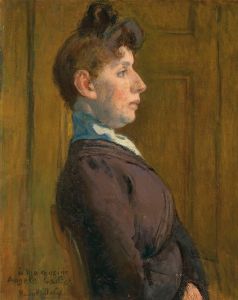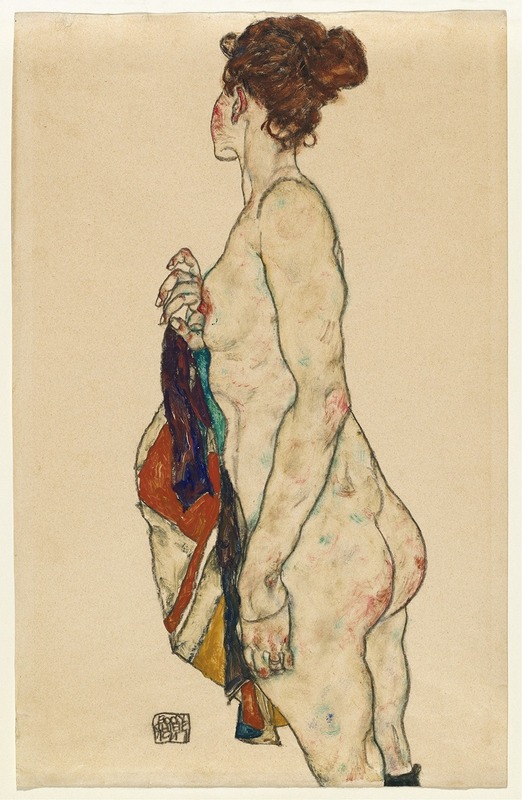
Standing Nude with a Patterned Robe
A hand-painted replica of Egon Schiele’s masterpiece Standing Nude with a Patterned Robe, meticulously crafted by professional artists to capture the true essence of the original. Each piece is created with museum-quality canvas and rare mineral pigments, carefully painted by experienced artists with delicate brushstrokes and rich, layered colors to perfectly recreate the texture of the original artwork. Unlike machine-printed reproductions, this hand-painted version brings the painting to life, infused with the artist’s emotions and skill in every stroke. Whether for personal collection or home decoration, it instantly elevates the artistic atmosphere of any space.
Egon Schiele's Standing Nude with a Patterned Robe is a notable example of the Austrian artist's distinctive approach to figurative art. Created in 1917, during the later years of Schiele's career, the work exemplifies his exploration of the human form, emotional expression, and his characteristic use of line and color. Schiele, a key figure in the Expressionist movement, is renowned for his raw, unflinching depictions of the human body, often rendered with a sense of vulnerability and psychological intensity.
The artwork portrays a standing female figure, partially draped in a patterned robe. The robe, with its intricate design, contrasts with the exposed areas of the subject's body, emphasizing both the sensuality and the fragility of the human form. Schiele's use of bold, angular lines and his attention to anatomical detail are evident in this piece, as is his tendency to distort proportions slightly to heighten emotional impact. The figure's pose and expression suggest a sense of introspection or detachment, a recurring theme in Schiele's work.
Schiele often worked with live models, and many of his subjects were women from his personal and professional life. However, the identity of the model for Standing Nude with a Patterned Robe is not definitively documented. The artist's fascination with the interplay between clothing and nudity is a central element of this piece, as the patterned robe serves both to conceal and to draw attention to the figure's form.
The medium of the artwork is gouache, watercolor, and pencil on paper, a combination Schiele frequently employed to achieve his vivid, textured compositions. The use of watercolor allows for subtle gradations of color, while the pencil work provides sharp, precise outlines that define the figure. This technique underscores Schiele's mastery of both line and color, hallmarks of his artistic style.
Standing Nude with a Patterned Robe was created during a period of significant artistic productivity for Schiele, despite the challenges posed by World War I. By 1917, Schiele had gained recognition in the Viennese art world, and his works were increasingly sought after by collectors. Tragically, his career was cut short when he died of the Spanish flu in 1918 at the age of 28.
Today, Standing Nude with a Patterned Robe is considered an important example of Schiele's oeuvre, reflecting his innovative approach to portraiture and his ability to convey complex human emotions through his art. The piece is held in a private collection, and its exact provenance and exhibition history are not widely documented.





